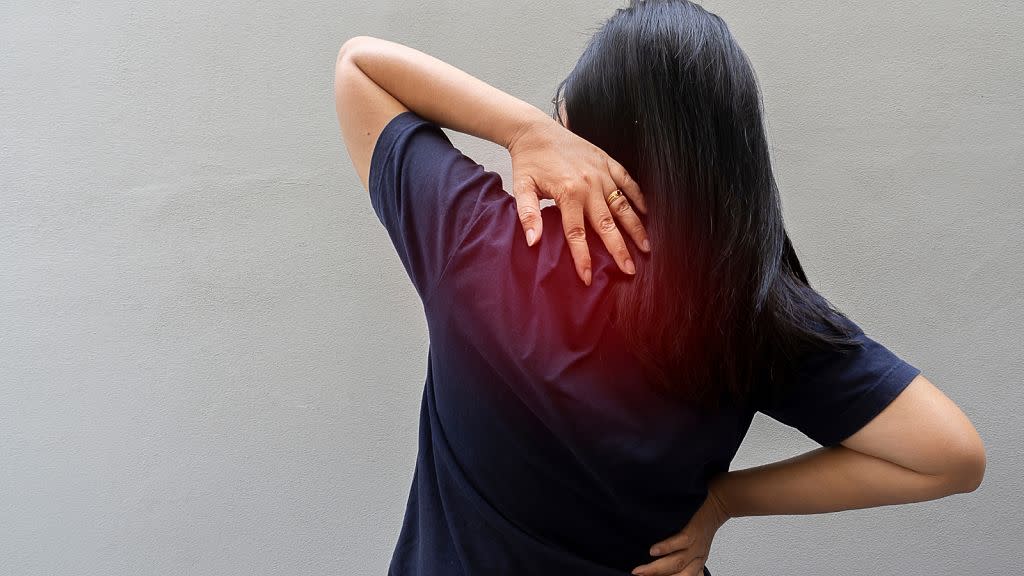Do women really feel pain more than men? New study looks to bust gender stereotypes

When it comes to pain, stereotypes relating to sex and gender tend to come into play. But, is a male's threshold really higher than a female's? Are women really more sensitive than men?
These are some of the questions the International Association for the Study of Pain (IASP) hopes to answer by the end of 2024 with new research.
Its goal is to tackle, understand, and create awareness of the disparities between sex and gender in relation to pain, which it defines as an "unpleasant sensory and emotional experience".
According to the World Health Organistion (WHO), sex refers to "the different biological and physiological characteristics of males and females, such as reproductive organs, chromosomes, hormones, etc".
Gender, on the other hand, refers to the characteristics of women, men, girls, and boys that are socially constructed. This includes norms, behaviours, and roles, as well as relationships with each other.
What do we know so far?
In regards to sex, various researchers have in the past conducted laboratory experiments where, through pressure or temperature stimuli, they caused pain in voluntary participants.
Their results indicate that women may be more sensitive to pain than men, which means they have a lower threshold. However, it has also been found that experiencing pain has a greater impact on men than on women.
This begs the question: where do the differences lie? Is it our brains or the things we do to regulate pain that make the distinction? Are hormones involved? Science has no clear answer to these questions, although certain studies do find disparities in hormonal or brain response to painful stimuli.
In fact, some studies find no difference between men and women when taking into account other aspects, such as psychological variables specific to each person. Examples of these include the level of anxiety or the strategies that each person has for coping with negative situations.
Hormones could play key role
About half of chronic pain conditions are more common in women, with only 20 per cent having a higher prevalence in men.
Dr Javier Medel, an anaesthesiologist and head of the pain unit at the Hospital Vall d'Hebron in Barcelona, explains that "there is a biological component to this, involving receptors, hormonal differences and even genes," but that all the studies conducted up until now are purely "experimental".
Hormones can exert an influence on pain in a variety of ways by altering sensitivity to pain, altering biological processes associated with pain (for example inflammation), driving hormonally dependent pathologies (for example endometriosis), or impacting moods to alter the pain experience.
Clinical pain research suggests that gender may also affect how an individual contextualises and copes with pain.
'Pain is very subjective'
Traditionally, masculinity is stereotypically associated with bravery and toughness, while femininity is linked to sensitivity. Some research suggests that, regardless of sex assigned at birth, people who perceive themselves as more masculine have a higher threshold and tolerance for pain.
"Pain is very subjective," Medel told Euronews Health, adding that "everyone experiences it differently, and biographically speaking, it depends on how you have responded to painful stimuli in the past".
He also explains that this not only depends on gender, but also on ethnicity, as a women or a man's role my vary between these. In northern Europe, for example, "they have a different conception of pain due to the weather," he says.
Delayed diagnosis due to bias
Due to gender stereotypes, there exists certain biases for women patients in the healthcare system in general.
Dr Laia Pratcorona, a Gynaecologist and active promoter of women's health in medicine, explains that "due to the vision that women are more emotionally unstable," diagnosis and treatment can be delayed, increasing mortality rates.
"If a women attends a GP because of pain and doesn't fit certain clinical parameters, the first thing they normally do is send them to see a psychiatrist," she said.
Females have also been and are under-represented in clinical trials. In the past, they have been excluded due to their unstable hormone levels during their menstrual cycle.
But this, explains Pratcorona, "is a problem when it comes to drug dosages," as these same drugs are then administered to women (with periods).
What more can be done?
Both Medel and Pratcorona concur on the fact that more investigation needs to be done on the matter and also more divulgation, which is what the IASP aims to achieve by the end of the year.
Pratcorona told Euronews Health that "many people are not aware of this bias within medicine" and this is why her and another co-workers are trying to get a subject called 'Gender and Medicine' implemented in the Autonomous University of Barcelona.
Medel explains that now it is obligatory to include both males and females in medical investigations, but that "the next step is to also include different genders".

